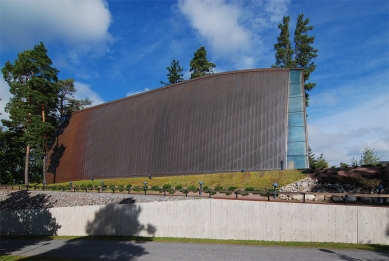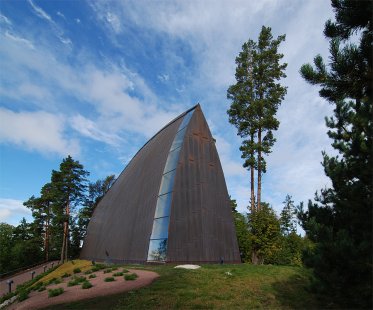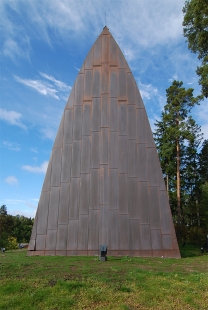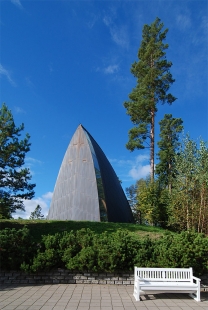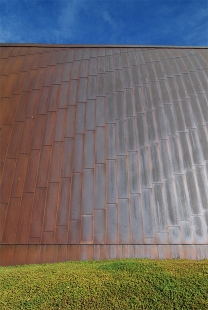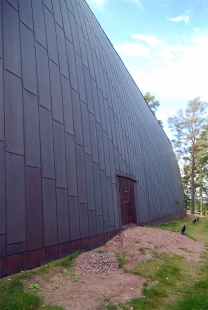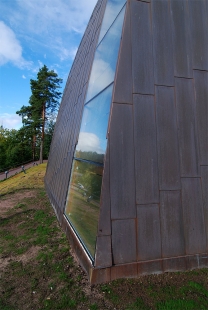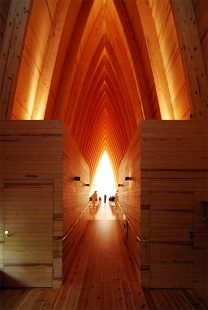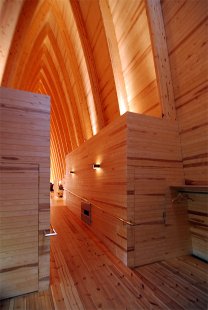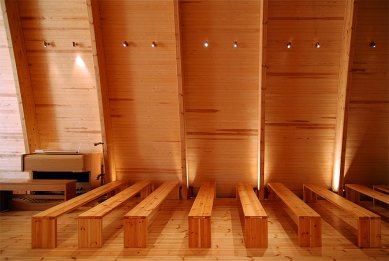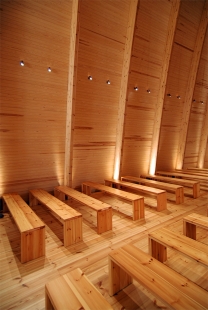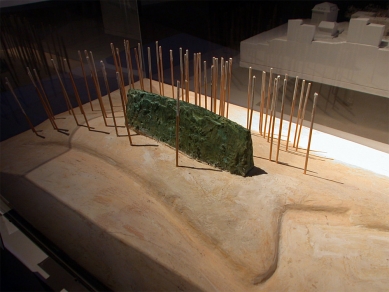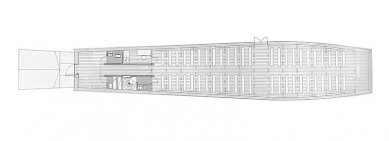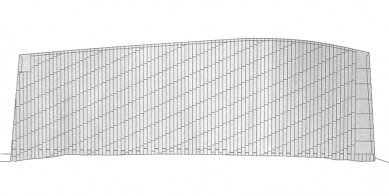
St. Henry’s Ecumenical Art Chapel

In the landscape of the island of Hirvensalo, forested hills rise from the flat fields. The chapel is aligned east west atop one of the hills. Its siting focuses the landscape. The surrounding existing buildings, which are parts of the service center meant for cancer patients, form a village from which the chapel rises. The copper surface of the chapel will become green by time and so the building will be in harmony with the colour of the surrounding trees. The form of the chapel speaks quietly. The intention was to create a large landscapesculpture and a small building. The path to the chapel rises up the hill. The entrance to the chapel is through a small foyer.
The foyer leads to the large hall, the stomach of the fish. The fish was a symbol of first Christians. The early symbol fits to the chapel, because it is ecumenical, i.e. meant for all Christians despite of their congregation. The gallery and the chapel are one space. The gallery is to the rear of the space and the chapel to the front. The altar is at the end of the axis. In the rear space the benches are taken away when there is an art exhibition.
The interior is of pinewood. The contrasting play of light and shadow powerfully articulates the interior of the space. The wooden pine ribs of the construction are lit by spotlights. Strong indirect light enters from both ends of the chapel. The altar window is an art work created by artist Hannu Konola.The exhibition of art and religious ceremonies coexist within the same space. The symbiosis of art and ceremony is well known from Renaissance churches, which are still used in this way. Visitors view the art at the rear of the space, while religious ceremonies are occurring in the front of the chapel.
The foyer leads to the large hall, the stomach of the fish. The fish was a symbol of first Christians. The early symbol fits to the chapel, because it is ecumenical, i.e. meant for all Christians despite of their congregation. The gallery and the chapel are one space. The gallery is to the rear of the space and the chapel to the front. The altar is at the end of the axis. In the rear space the benches are taken away when there is an art exhibition.
The interior is of pinewood. The contrasting play of light and shadow powerfully articulates the interior of the space. The wooden pine ribs of the construction are lit by spotlights. Strong indirect light enters from both ends of the chapel. The altar window is an art work created by artist Hannu Konola.The exhibition of art and religious ceremonies coexist within the same space. The symbiosis of art and ceremony is well known from Renaissance churches, which are still used in this way. Visitors view the art at the rear of the space, while religious ceremonies are occurring in the front of the chapel.
author's report
0 comments
add comment


